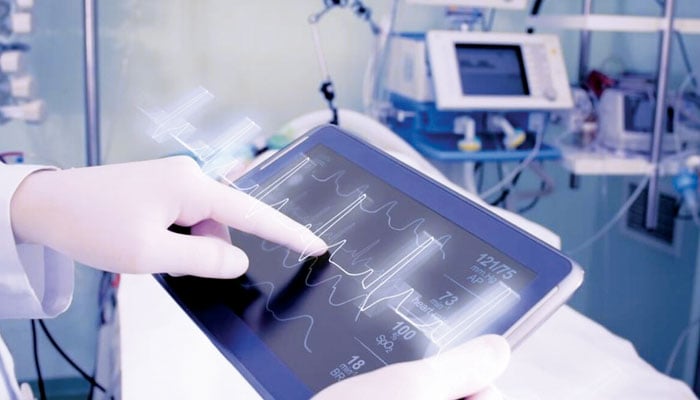In this modern era, the medical experts are introducing modern methods of treatment and antibodies for major diseases. Some of them are mentioned below.
Power your electronics with your blood
Implantable medical devices such as Pace makers are used to save thousands of lives, but they require a battery to operate. The battery attached to the Pace maker can keep them running for 8 years. After that it needs to be changed. Similarly, battery-powered heart pumps require charging outside the body. For this purpose, a wire is inserted through the skin of the patient’s body.
If the battery is charged with the help of the body’s own energy system, many problems can be solved. Therefore, modern research has revealed that it will use the glucose in the patient’s blood as an energy source. The implant will provide power to the device’s battery. These biofuel cells can be made using noble metals (e.g. platinum). This metal is resistant to oxidation and dissolution. These can be carried out by an electromechanical interaction between the glucose in the blood and the oxygen in the surrounding tissues, to generate an electrical current. For this purpose platinum electrodes made of metals are being developed.
Synthetic Biology Exciting New Frontiers
Can life be created in the laboratory with the help of a scratch? Can a new organism (living organism) be engineered to have characteristics that were not present in the natural organism? Can existing biological organisms be modified through synthesis in such a way that they produce properties that did not exist in nature? These are the questions that are being raised a lot in the field of synthetic biology. is being considered. Many applications and uses have already been found in this rapidly expanding topic.
By modifying the genetic makeup of plants, existing drugs in the field of medicine can be produced more cheaply and more effectively. For example, an anti-malarial drug is made from the sweetwormwood plant, a mangrove tree found in the coastal forests of Southeast Asia. The demand for this drug is high, but the production of this plant is very limited, however. Scientists have succeeded in inserting bacterial genes into bacteria obtained from three different organisms.
which forms a precursor material, which can later be converted into an antimalarial drug, and is much cheaper than the material obtained directly from the plant. Anti-disease drugs are being developed using hydrogen as an energy source to remove heavy metals and other pollutants from contaminated soil, or bio-microbes that can be used for blood transfusions. It will float through the vessels and kill the cancer cells at the site of the tumor.
Genetically modified mosquitoes
According to an estimate, every year 200 million people are infected with malaria and the number of people who die from malaria is 800,000. This disease is caused by the bite of a female mosquito. Dengue and yellow fever are also caused by the bite of the same mosquito. These mosquitoes have developed resistance to anti-malarial drugs. A drug extracted from a Chinese medicinal plant, Artemisia annua, has long been used to treat malaria.
It contains a compound called artemisin, which is effective against resistant forms of malaria. It is used in many of the new drugs being developed to treat malaria, but the limited availability of this medicinal plant has hindered mass production of the drug.
In this regard, an alternative concept is being worked on, through which the population of the harmful mosquito species will decrease significantly. Anthony James, who works at the University of California, Irvine, has developed a genetically modified form of the mosquito that will only harm the female mosquito. A genetic defect in them will cause these mosquitoes to lose their ability to fly.
A new type of smart bandage
A new type of smart bandage is in development that will not only provide information about the condition of the wound but also release medicine when it is needed. Smart Bandage will reduce wound healing time and aid in healing. Information emitted from the bandage will be transmitted to the medical staff through a sensor. This bandage will be more useful in emergency situations when injured persons have to wait for treatment.
This bandage will assess the condition of the wound and start delivering medicine before medical personnel arrive. This will prevent deaths due to lack of immediate medical attention. This smart bandage is developed by a private company.
Protecting the brain from damage by using antibodies in case of stroke
One of the most important issues for stroke patients is the timely administration of clot-dissolving drugs called rtPA. These drugs work only if given within hours of a stroke. Otherwise, the risks outweigh the benefits. Leave behind. These risks include a sudden increase in blood pressure as a result of the drug’s clot-dissolving process, which can subsequently rupture blood vessels and cause further bleeding. Also, this medicine is used after a complete brain scan of the patient, so that the nature of the stroke can be ascertained first.
Scientists at the University of Caen, Basse-Normandin in France have developed an antibody that sticks to certain brain nerves and minimizes its damaging effects by allowing more time for treatment. . Giving the drug combined with the antibody in mice reduced brain damage in 70 percent of patients, but only when given immediately or six hours after two strokes. Mice treated with the antibody also had a better recovery. It is hoped that if the antibody is given to the patient before they arrive at the hospital, the process of dissolving the clot will be safer and better. This is expected to improve the patient’s condition.
For stubborn wounds … Cotton Candy
Some wounds in diabetic patients are very difficult to treat. It takes years to fill it. In case of some serious injuries, limb amputation becomes necessary. Normal wound healing relies on fibrin, a fibrous structure that binds blood platelets and forms a protective wall scaffolding, forming a wound cover.
Mo-Sci Corporation, based in Rolla, Missouri, USA, has developed a new glass nanofiber-based material that looks like cotton candy that children love to eat, mimicking the natural process of forming blood clots. and initiates the wound healing process. This material is made of borate glass which is cheap and easy to manufacture. It is easily absorbed by the body so there is no need for stitches or bandages to be removed. This product is in clinical trials. It is expected to be introduced in the market soon.
Rapid biopsy
Knowing whether the tissues of the body are cancerous or not is a matter of life and death for the patient. It takes an hour, delaying the most important surgical procedure. NMR and sensitive spectroscopy techniques are now being used for early detection of cancer. In this, tissues are subjected to a powerful magnetic field and radio frequency waves in an NMR spectrometer. Tissue molecules undergo a special state of dance in a strong magnetic field.
The way they dance and absorb energy under the influence of radio frequency waves determines whether they are cancerous or harmless. NMR spectroscopy was used for the first time at St. Mary’s Hospital in London to analyze cancer tissue. Another procedure involved taking tissue the size of a pinhead and burning it with an electrode (electrosurgery). and the smoke from this burnt tissue is passed through a mass spectrometer.
Against the flow, molecules of different types of product are collected and separated by weight. This enables rapid detection of cancer. The method is being used by a group of researchers in Germany from the University of Glessen at a hospital in Debrecen, Hungary. The best facilities for NMR and mass spectroscopy in the Afro-Asian region are available at the Hussain Ibrahim Jamal Research Institute for Chemistry, International Center for Chemical and Biological Sciences, University of Karachi. There are 13 Super conducting NMR spectrometers.
Asthma attack identified …… a day ago
An asthma attack is very painful. If it is known in advance, the pain can be avoided through preventive medicine and other measures. A private company has developed a handheld asthma-sensing device that provides 24-hours warning of an asthma attack, with the help of which certain preventive measures can be taken. It is known that 2 hours before an asthma attack, the amount of nitric oxide in the body starts to increase rapidly and the inflammation and swelling in the lungs starts before the asthma attack.
These sensors measure nitric oxide levels at extremely low concentrations (one part per billion). The greater the irritation or inflammation, the greater the amount of nitric oxide. The severity of an asthma attack can also be estimated by this method. And doctors can prescribe medications.


